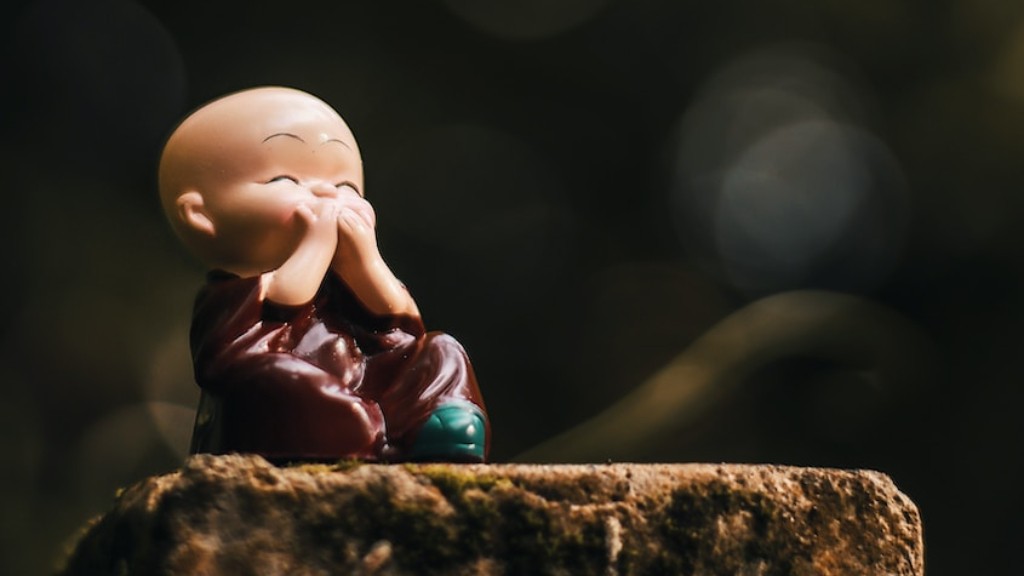Buddhism is a religion that was founded by Siddhartha Gautama in the sixth century BCE. Siddhartha was born into a wealthy family in what is now Nepal. He grew up sheltered from the suffering of the world, but he became aware of it after he left his home and saw a sick man, a beggar, and a corpse. Siddhartha was so moved by what he saw that he decided to leave his family and live as a monk. He spent six years meditating and searching for answers, but he was not satisfied. Siddhartha then had a series of profound experiences that led him to realize the Four Noble Truths. The Four Noble Truths are that suffering exists, that suffering has a cause, that suffering can be ended, and that there is a path to the end of suffering. After Siddhartha attained enlightenment, he began teaching the Four Noble Truths and the Eightfold Path, which is the path to ending suffering.
The story of the Buddha’s life, known as the Buddhacarita, or “Deed of the Buddha,” begins with his birth and leads up to his first sermon. The Buddha was born Siddhartha Gautama, a prince of the Sakya clan of Nepal. His father, Suddhodana, was the ruler of the Sakya people, and his mother, Maya, was a princess of the neighboring Lichhavi clan. Siddhartha grew up in luxury, shielded from the outside world. However, one day he ventured beyond the palace walls and saw the suffering of his fellow beings. This experience deeply affected Siddhartha, and he began to question the meaning of life.
Siddhartha renounced his royal title and left his family to pursue an ascetic life. He studied under various teachers, but was not satisfied with their answers. Siddhartha eventually realized that the path to enlightenment could not be found through external means. He attained enlightenment through his own efforts, and became known as the Buddha, or “awakened one.” The Buddha then began to teach others the path to enlightenment.
When was the creation of Buddhism?
Buddhism is one of the oldest religions in the world, and it has had a significant impact on the countries of Asia. The Buddha was a spiritual teacher who taught that the way to achieve enlightenment was through meditation and mindfulness. His teachings have helped to shape the cultures of Asian countries, and Buddhism is still a significant religion in many of these countries today.
Siddhartha Gautama was born circa 563 BCE into a wealthy family. Gautama rejected his life of riches and embraced a lifestyle of asceticism, or extreme self-discipline. After 49 consecutive days of meditation, Gautama became the Buddha, or “enlightened one”. The Buddha taught that life is full of suffering and that the only way to end this suffering is to achieve Nirvana, or a state of complete peace and enlightenment. The Buddha’s teachings have helped millions of people achieve peace and Enlightenment.
Where did Buddhism start How did it begin
Buddhism is one of the world’s major religions. It originated in South Asia around the 5th century BCE with Siddhartha Gautama, and over the next millennia it spread across Asia and the rest of the world. Today, there are an estimated 500 million Buddhists worldwide, making it one of the largest religions in the world.
Buddhism is a religion that originated in ancient India. It is based on the teachings of Siddhartha Gautama, an ascetic who lived in the kingdom of Magadha. Buddhism spread from northeastern India to Central, East, and Southeast Asia as it evolved.
Who is the god of Buddhist?
In Buddhism, Brahma is not considered a creator god, but is instead seen as a protector of teachings (dharmapala). He is often depicted as a leading god (deva) and heavenly king, and is revered as a powerful figure who can help to ensure the success of Buddhist practitioners.
Buddha was a spiritual leader and founder of Buddhism. He was born in Lumbini, near Kapilavastu, in the Shakya republic, in the 6th or 4th century BCE. He died in Kusinara, in the Malla republic, in the Magadha kingdom.
Who are the 3 gods of Buddhism?
The Three Buddhist Deities Vajrapāṇi, Mañjuśrī and Avalokiteśvara are worshipped by the Buddhists. All three deities embody different aspects of the Buddha’s teachings. Vajrapāṇi is the Buddha’s chief attendant and is considered to be a powerful protector. Mañjuśrī is the Buddha of wisdom and is often depicted holding a sword, which represents the cutting of ignorance. Avalokiteśvara is the Buddha of compassion and is often shown with thousand arms, representing his ability to help all beings.
In Buddhism, there is no concept of punishment or reward. There is no divine being who decides who goes to hell or heaven. There is merely the illusory results of our thought, words and deeds, which we call karma.
What do Buddhist believe about Jesus
There are some high level Buddhists who have drawn analogies between Jesus and Buddhism. For example, in 2001, the Dalai Lama stated that “Jesus Christ also lived previous lives”, and added that “So, you see, he reached a high state, either as a Bodhisattva, or an enlightened person, through Buddhist practice or something like that”. Thich
Tara’s status in the Himalayan region is more that of a supreme goddess or female buddha than a bodhisattva. She is referred to as the Wisdom Goddess, the Embodiment of Perfected Wisdom, the Goddess of Universal Compassion, and the Mother of all Buddhas. Tara is revered by Tibetans and Nepalese as a powerful being who can bestow protection, good fortune, and blessings. Tara is often invoked in times of trouble or danger, and her mantra is said to be particularly potent.
What is Buddhism’s holy book called?
The TripitakaPali canon is the complete canon of the Theravada branch of Buddhism. It is first recorded in Pali and includes the teachings of the Buddha and his disciples. The TripitakaPali canon is the authority for the Theravada tradition and is used by Theravada monks for their daily recitations.
Buddhism is a religion that is based on the teachings of Siddhartha Gautama. The main principles of this belief system are karma, rebirth, and impermanence.
Is the Buddha a god
Buddhists believe that the Buddha was a human being who attained enlightenment through his own efforts. They do not worship him as a god or divine messenger. Instead, they see him as an example of what is possible for all humans.
Atheism is not a central tenet of Buddhism or Jainism, and in fact, some members of these religions do believe in a creator god. However, the Buddha himself rejected the idea of a creator god, and Buddhist philosophers have even argued that belief in an eternal god is nothing but a distraction for humans seeking enlightenment.
Does nirvana mean death?
Nirvana can be seen as the ultimate separation from all the Bondage that we experience in life. It marks the end of our struggles and the beginning of a new, more peaceful way of living. It is a very positive and powerful concept that can help to bring about positive change in our lives.
This is a traditional Buddhist prayer for all beings to be free from suffering and to be able to find true happiness. It is a reminder that we should all live with compassion and understanding, without attachment or aversion.
What is sin to a Buddhist
Buddhism does not believe in any personal God or Supreme Being, and therefore the word “papa, apunn” or sin refers to the negative elements that hinder the mind’s growth and development. By practicing mindfulness and meditation, we can purify our minds and overcome these obstacles to our spiritual progress.
In Buddhism, life and death are seen as a continuum, with consciousness (the spirit) continuing after death and potentially being reborn. Death is therefore seen as an opportunity for liberation from the cycle of life, death and rebirth.
Final Words
In Buddhism, the story of the creation of the universe is known as the “Cosmic Egg” story. In this story, the universe is born from an immense, primordial egg. The egg is incubated in the cosmic waters for an immeasurable amount of time, until it finally hatches and the universe is born.
Buddhism is a religion and philosophy founded in India by Siddhartha Gautama, who is commonly known as the Buddha. The Buddha lived and taught in the northeastern part of the Indian subcontinent and is revered by Buddhists as a teacher who attained full Enlightenment, or nirvana. The story of the Buddha’s life, known as the Buddha’s biography or the “Jataka tales”, can be found in the scriptures of many Buddhist traditions.

